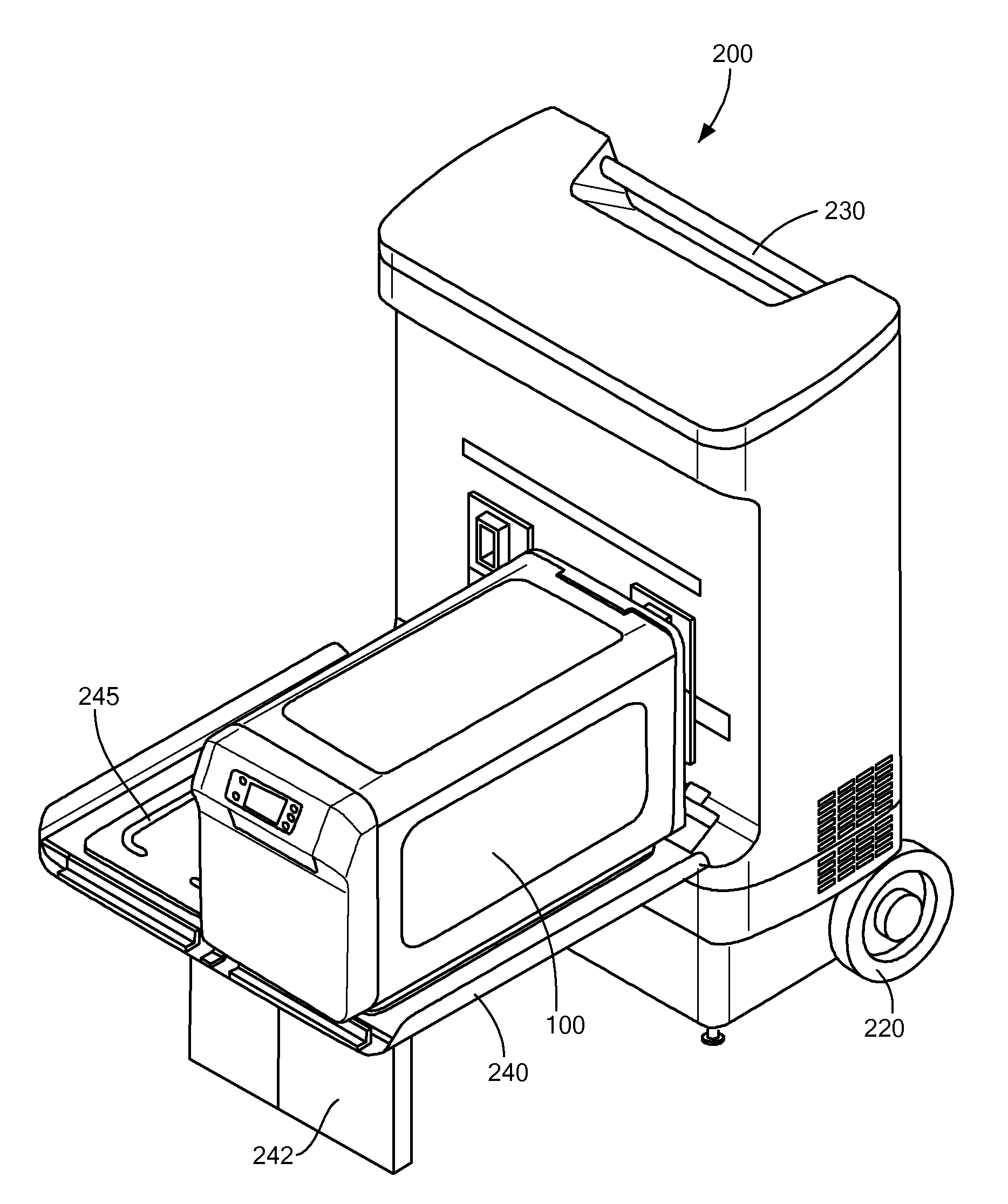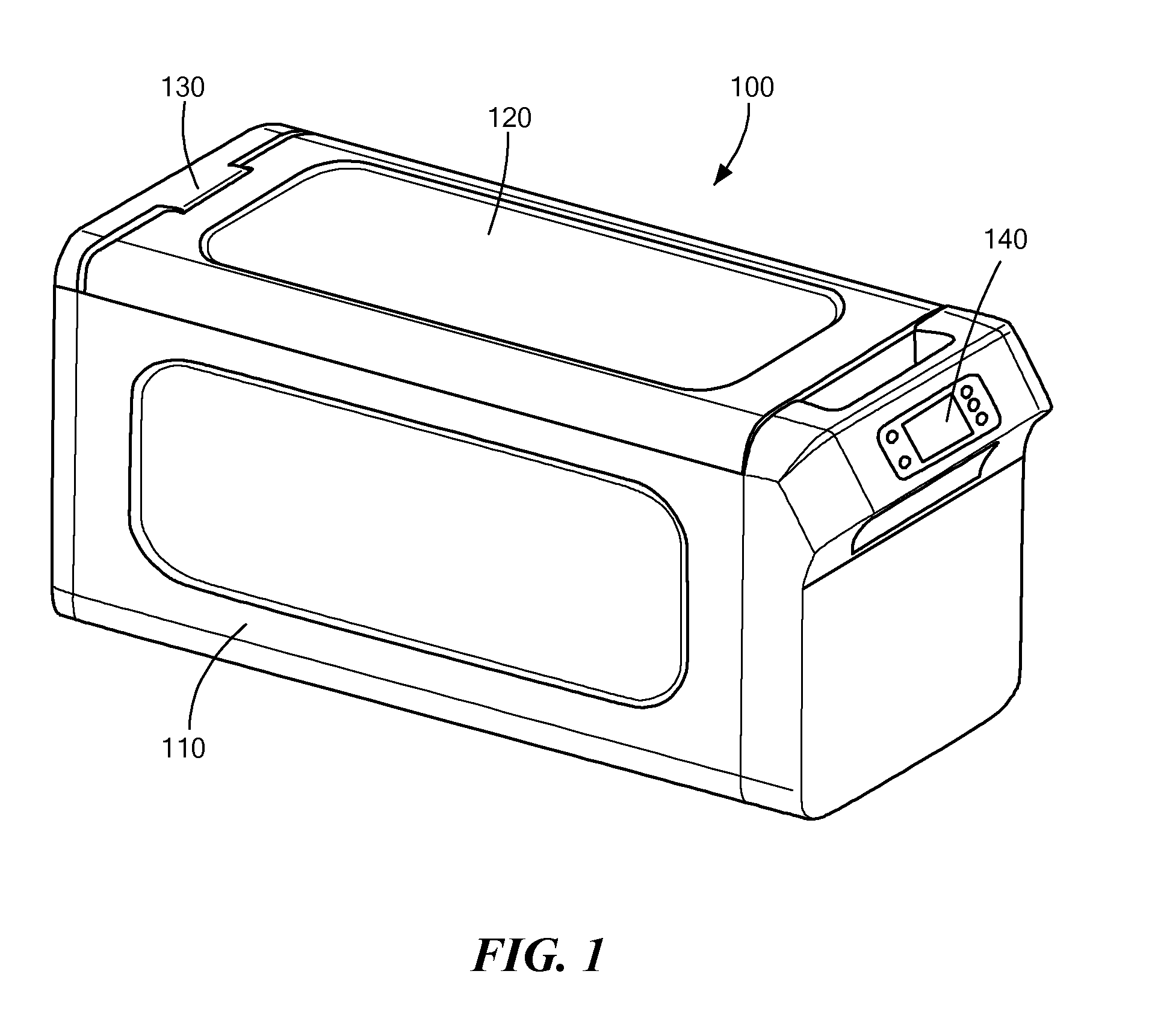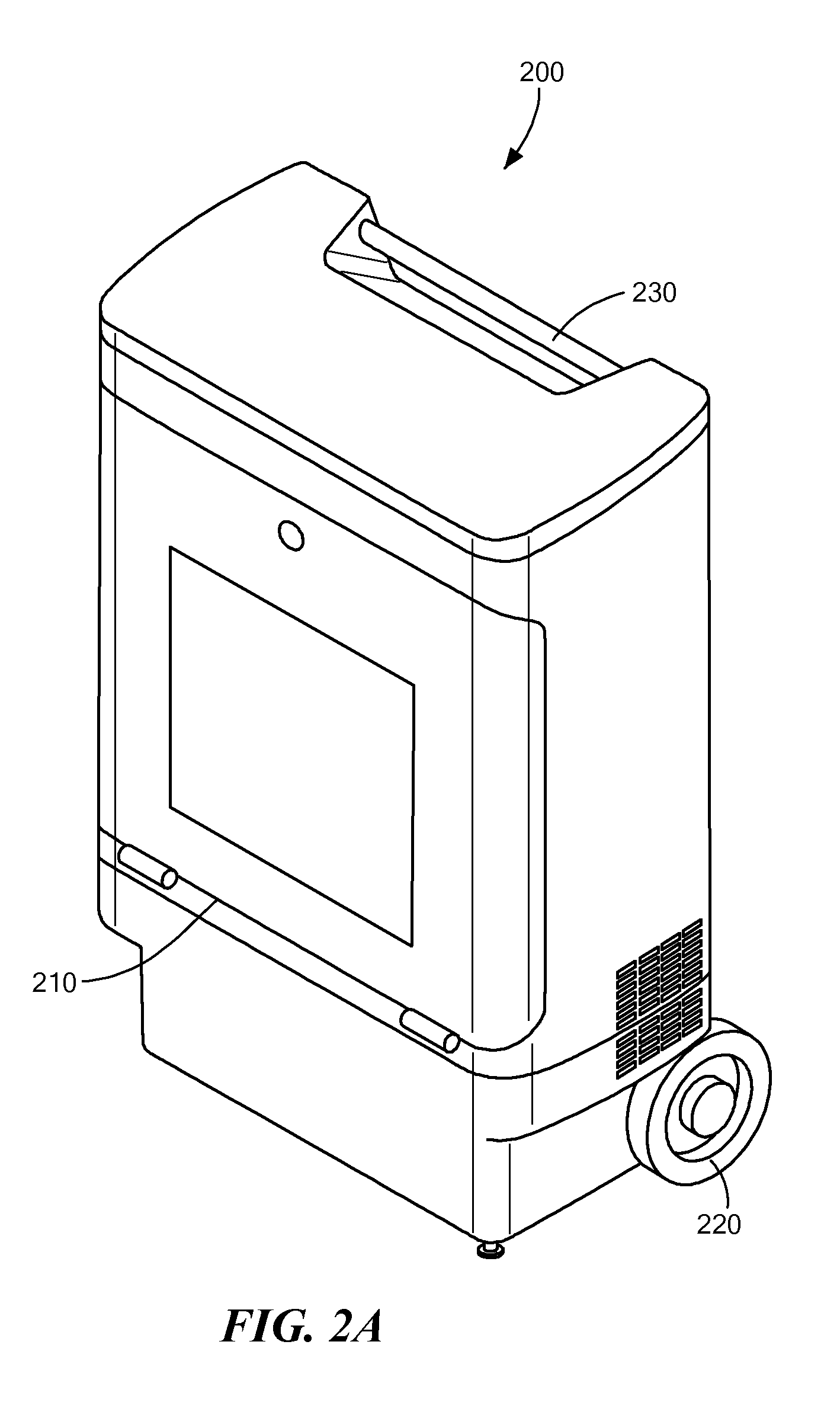System and Method For Active Cooling of Stored Blood Products
- Summary
- Abstract
- Description
- Claims
- Application Information
AI Technical Summary
Benefits of technology
Problems solved by technology
Method used
Image
Examples
Embodiment Construction
[0042]In illustrative embodiments, a blood storage device may be used in conjunction with a portable cooling device to provide active cooling of the interior of the blood cooling device and, therefore, active cooling of stored blood and blood products. As discussed in greater detail below, embodiments of the present invention are able to maintain stored blood and blood products at the proper temperature and ensure that the blood and blood products are not stored above or below allowable temperature limits.
[0043]It is important to note that some embodiments of the present invention may also be used for storage and transportation of a variety of biological materials. For example, the storage device may be used to cool, store, and transport organs, tissues, cells, cellular material, and / or other biological material and tissue.
[0044]FIG. 1 shows a perspective view of one embodiment of a blood storage device 100 in accordance with embodiments of the present invention. As can be seen in t...
PUM
 Login to View More
Login to View More Abstract
Description
Claims
Application Information
 Login to View More
Login to View More - R&D
- Intellectual Property
- Life Sciences
- Materials
- Tech Scout
- Unparalleled Data Quality
- Higher Quality Content
- 60% Fewer Hallucinations
Browse by: Latest US Patents, China's latest patents, Technical Efficacy Thesaurus, Application Domain, Technology Topic, Popular Technical Reports.
© 2025 PatSnap. All rights reserved.Legal|Privacy policy|Modern Slavery Act Transparency Statement|Sitemap|About US| Contact US: help@patsnap.com



